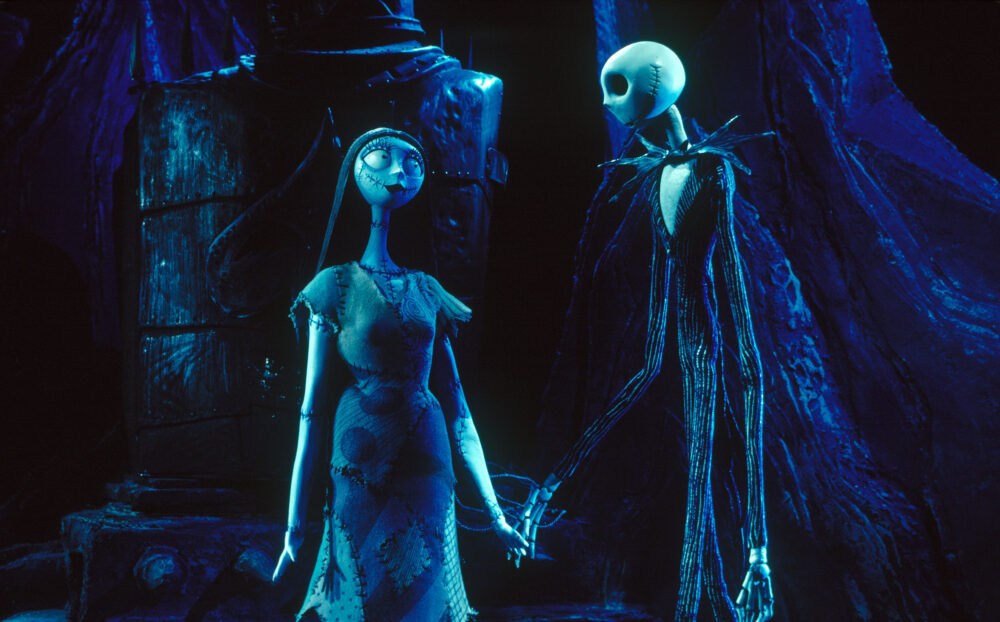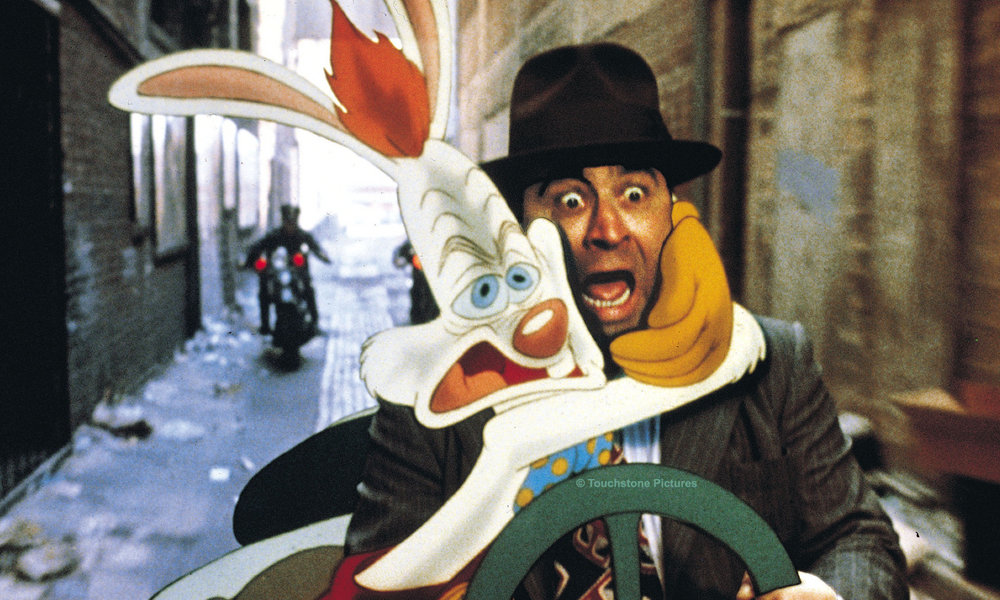In a sense, Annecy is a parade of novelty. The festival is a showcase for new films, new announcements, new technologies. Yet amid all this, some of the most-hyped events are those featuring veterans — those masters of animation who come to impart their insight to a star-struck crowd of students and industry folk. This year’s line-up was particularly rich in these kinds of talks and masterclasses. We were there, pen and pad in hand…

In his long career, Henry Selick has directed five features, starting with The Nightmare Before Christmas (1993) and running up to Wendell & Wild (2022). But his output spans far more widely, encompassing shorts, spots, animation for other directors and a tantalizing unmade feature. Clips of these were shown during a career-spanning Q&A he gave at Annecy, ahead of a 15th-anniversary 3D screening of his film Coraline.
Puppet animation is the technique with which Selick is associated, but it was not the one he started out in. We were shown a part of his rarely screened Phases (1977), a sensuous hand-drawn short he made at CalArts, in which an angular line figure breaks out of a walk cycle to transform into various beasts. (As a child, Selick told us, “I wanted to become a lion or a horse.”) He continued to experiment over the years: see, for example, his wild and witty idents for MTV, which range between pixelation, cut-out, puppets and 2D. Or the bold graphic variations of his short film Seepage (1981), which he made independently between better-paid jobs at Disney. “In the U.S., there aren’t nearly as many arts grants as there should be,” he lamented.
These early works already show Selick’s flair for fluidity and interest in the monstrous, which are on full display in his features — including his great aborted project, The Shadow King. We saw a few minutes of footage, in which puppet animation is exquisitely juxtaposed with 2D hand shadows. The film was developed then cancelled at Disney. “Ultimately it was too weird for John Lasseter,” noted Selick drily. He is now reportedly planning to revive it as a graphic novel.
The Nightmare Before Christmas came out the same year as Jurassic Park, whose CG effects made some stop-motion animators fear extinction. Selick said he actually felt this more strongly in the wake of Toy Story. Yet, like Spielberg’s dinosaurs, he and his stop-motion colleagues would go on to be “resurrected — many times.” Asked why the technique has endured, he likened it to a ritual magic, with roots running down to the earliest trick photography. “It can’t grow old, because it’s already old.”
The greatest testament to the lasting charm of Selick’s movies is his fans, many of whom jostled for places in the packed room. Some years after the release of The Nightmare Before Christmas, he noticed that trick-or-treaters were turning up at his house dressed as characters from the movie. He has since collected reams of images of tattoos, cosplay and fan art inspired by his works. He concluded the Q&A with a slideshow of these — proof that his films, like stop motion itself, do not grow old.

Five years after his death, Richard Williams remains a talismanic presence at Annecy. The supreme animator, who penned the classic instructional book The Animator’s Survival Kit, is now the author of a second book, Adventures in Animation: How I Learned Who I Learned From and What I Did with It. A memoir of sorts, the richly illustrated book was assembled posthumously by his producer and widow Imogen Sutton, who presented it in a Q&A at the festival this week.
Williams “never stopped learning,” said Sutton. Early in his career, he “sucked the blood” — as he put it — of his heroes of Golden Age animation, imbibing the teachings of Milt Kahl, Art Babbitt and the like. Some animated and taught at his studio in London, where he worked on films including Who Framed Roger Rabbit and A Christmas Carol. When he himself took to teaching in the 1990s, he thus became “the bridge between the Golden Age of the ‘30s and ‘40s and the current Golden Age,” added Sutton.
Chapters on the great animators he worked with form one section of the new book. The rest traces his long life from his upbringing in a well-to-do Toronto family to his final, unfinished film, the short A Call to Arms. The book describes what he needed “to eventually gain the artistic muscle to arrive at my goal,” writes Williams: namely, “to be able to animate anything I can think of — and make it convincing.”
The first 22 pages were handwritten and laid out by Williams himself. After he died, Sutton composed the remainder of the book from notes and materials, and typeset them with those 22 pages as a template. The book is full of engaging anecdotes from an exceptional career, alongside memorable aphorisms about the nature of his work. For example: “I think of animation as drawn music — clusters of drawings (or positions) are like clusters of notes.”
The Q&A with Sutton brought the book full circle, in a way, as it was at Annecy that Williams decided to write it. As he signed copies of The Animator’s Survival Kit, recalled Sutton, fans told him how much that book meant to them. “The teachers in our country are not very good,” one Chinese student apparently told him; “You are our teacher.” Moved by this, Williams resolved to return to writing.
Adventures in Animation will be published by Faber & Faber in August. For those still not sated by the book, more is on the way. The filmed companion piece to his first book, The Animator’s Survival Kit – Animated, heretofore available only as a large DVD set, will become available on streaming in January 2025, courtesy of Bloomsbury Video Library.
![Fantastic Mr. Fox [Park Circus]](https://www.beta.animationmagazine.net/wordpress/wp-content/uploads/Fantastic-Mr.-Fox-credit-Park-Circus.jpg)
He is one of the most famous directors ever to have worked in animation, yet until this year, Wes Anderson had never been to Annecy. He rectified that this week with a wide-ranging masterclass that focused on his two animated features, Fantastic Mr. Fox and Isle of Dogs, as well as the animated segments scattered throughout his live-action films.
Anderson talked at length about his naivety when starting out on Fantastic Mr. Fox, his first animated feature. “I kind of thought it was a side project,” he said. “Little by little, it took over my life.” He scripted the film (with Noah Baumbach) without thinking about storyboards — an approach he didn’t realize was unconventional in animation. During production, he largely directed the film remotely, sending notes via email. “It took time for [the crew] to trust me,” he recalled.
His experienced colleagues taught Anderson much along the way. The late Mark Gustafson, animation director on the film, was “my educator” in how to do things and who to hire. Meanwhile, director of photography Tristan Oliver pushed back against “my ideas about lighting[, which] were not good for stop motion” — Anderson wanted too little contrast, which was bad for miniatures.
Anderson’s experience on Fox meant things ran more smoothly on Isle of Dogs. It also pushed him to start storyboarding his live-action works, too. “I’ve had big scenes that I thought I didn’t get right” in the past, he said. Storyboards were “a way of planning more carefully” and avoiding further mistakes. “A lot of people will think that spontaneity is more important, or discovery.” But he prefers to prepare things as far as possible in advance.
Meticulousness is a hallmark of Anderson’s cinema, and increasingly so. Asked about his style, he noted that he sets rules for any one film which shape its look and character. “But the style that connects one of my films to another … is not so deliberate.” He compared it to handwriting: “It’s just what’s natural to me … You probably do create your handwriting, [but] not consciously.”
Promising that this won’t be his last time in Annecy, Anderson confirmed that he has a few “vague” ideas for new animated works. Given the chance to do another stop-motion feature like Dogs, “I would do [it] in a second.” The only trouble: “My family would have to deal with it.” After all, making an animated movie can be “a giant, slightly overwhelming thing.”
Alex Dudok de Wit is an animation journalist, consultant and festival programmer. He is the author of the BFI Film Classics book on Grave of the Fireflies and translator of Hayao Miyazaki’s manga Shuna’s Journey.




![masters Henry Selick | Richard Williams | Wes Anderson [phs. c/o Annecy Festival, ITV, 20th Century Studios]](https://www.beta.animationmagazine.net/wordpress/wp-content/uploads/masters-696x418.jpg)

